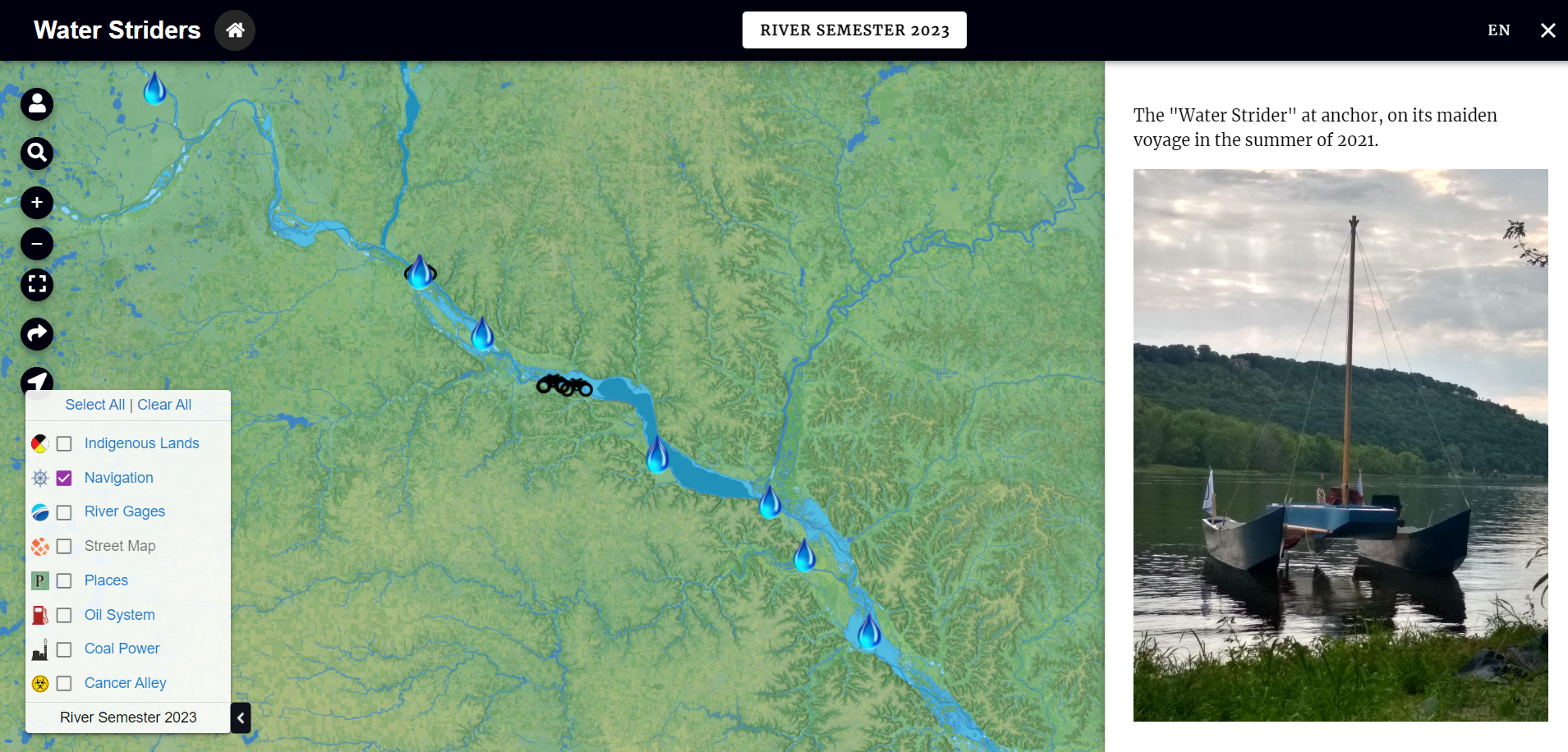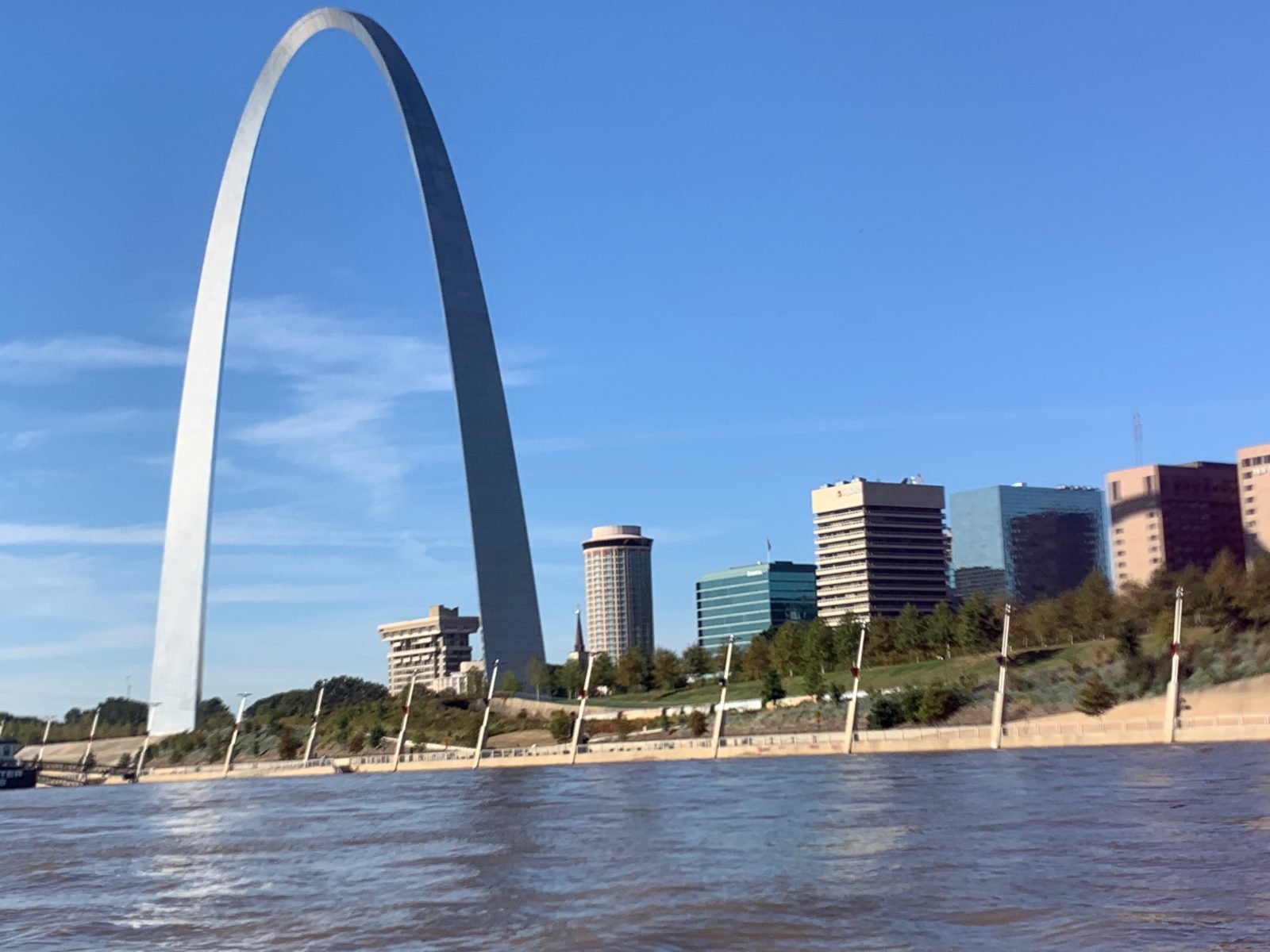This recipe is a part of the Mississippi Mud Book of Recipes.
I'm a catfish in the Mississippi River
Nobody knows my name or loves me, lord
No, nobody cares for me.
-Sung by Bruce "Sunpie" Barnes
We camp on a protected peninsula of sand a few miles downstream from Old River Control. We build our fire in a pockmark that dots the spit, a divet to protect us from the freezing wind and spotlights of barge captains. Our first night as we huddled talking around the fire, an eerie glow behind the trees on the river's east bank caught somebody's eye. Oh, it's not the moon, they say. That's not a city either–is it? We speculate. We're close to St. Francisville, right? No, this glow is too bright for such a small town. Somebody else speaks up: That's no city, that's Angola.
Downstream from a structure built to preserve agricultural interests in Southern Louisiana lies the largest prison in the United States. It is also the largest federally-run plantation in the county, by land and by population. I am not being flippant using the word plantation. Considering Louisiana (if it was a sovereign nation) would have the highest incarcerated population in the world, the choice naming of this place classifies a nation. The grounds of Angola are nearly the size of Manhattan. We drove deep into the woods merely to glimpse its front gates. Its placement by Old River Control is not coincidental. These structures are deeply interconnected, in history, scope, and purpose.
Angola and industrial agriculture share a similar, sinister goal–to move violence out of sight, and therefore, out of mind to the majority of Americans. Both systems perpetrate displacement, whether it's pointed directly at a people or pointed at land (which will, in turn, affect people). Shana M. Griffin has a step-by-step guide on how the state perpetrates displacement, regardless of race or ethnicity: extraction, confinement, erasure, blame, lack of investment, and displacement. Does this sound different from the rise of industrial agriculture and its effects on waterways and ecosystems? Are the health defects perpetrated through commodified food in Black, Brown, and poor communities not direct results of free reign of industry along our waterways? These rhetorical questions are painfully answered along the Mississippi River in Louisiana, and easily answered by looking at how these industries have benefited from lax policy and unchecked accumulation of capital.
Louisiana's political history is wrought with social control and state violence. This history expanded with Spanish colonization and the rise of the enslaved economy. Louisiana exists at the intersection of subsistence farming in the Atchafalaya Basin and plantation farming nearly everywhere else. These unique relationships to land, combined with a complex intermingling of races and classes, places Louisiana in a precarious position. The state has used the control of nature to govern its people, from Old River Control to levees, water management, and disaster relief. These policies use nature to extract capital, and the results have become manifestations of the war against Black, Brown, and poor people; in other words, people the state has decided are threatening to this accumulation of capital. After Hurricane Katrina, when hundreds of thousands of Black folks had homes and neighborhoods destroyed, U.S. Representative Richard H. Baker was quoted as saying "We finally cleaned up public housing in New Orleans. We couldn't do it, but God did." As is typical, American politicians chalk up the displacement of and violence against Black people as an act of god.
We witnessed these extractive infrastructures as we sailed through the Chemical Corridor. Enormous petrochemical plants and commercial barge and tow traffic are manifestations of the corruption in Louisiana's political history. Most of this infrastructure is the next step in a linear development and destruction of the river and its people. The cheapest land along the river in the 1950s and 60s were the plantation grounds, so petrochemical companies bought up large plots next to "Freedmen's Towns", majority Black settled areas around the plantation grounds after the Civil War. Now these petrochemical sites are expanding, displacing these communities sometimes multiple times, as in the case of Morrisonville, Louisiana. Petrochemical plants are infrastructural monuments to Black displacement.
Angola is no different. As Shana M. Griffin says, "displacement is a form of reproductive violence. When people are deemed a "demographic threat," they are removed through reproductive violence. In prisons, [Black] men are confined during their reproductive years." When somebody is incarcerated, their family also becomes prisoners. Just as housing policy can be a form of population control, so are the effects of prisons on Black communities. Black, Brown, and poor people have been affected the most by the preservation of neoliberalism and privatization of basic human needs since the 1980s. The state's response is to devalue, repress, and neglect these populations. One means of doing this is displacement and erasure.
How are incarcerated people fighting invisibility? Prisons actively use hunger and food as a means to get incarcerated people to do what they want. Prisoners resist this through food strikes, cell cooking, and work stoppages. Between 1968 and 1971 were a series of hunger strikes leading to violent uprisings within prisons, as more and more incarcerated individuals felt the confidence to refer to themselves as political prisoners, through the outreach of the Black Panther Party, for example. Most notably at the Louisiana State Penitentiary were the Angola Three: Herman Wallace, Albert Woodfox, and Robert Hillary King. In 1971, these men used food as a weapon against the prison system and as a form of collective resistance, "food was vital to material being and because securing the food prisoners desired gave them some measure of control over their lives."
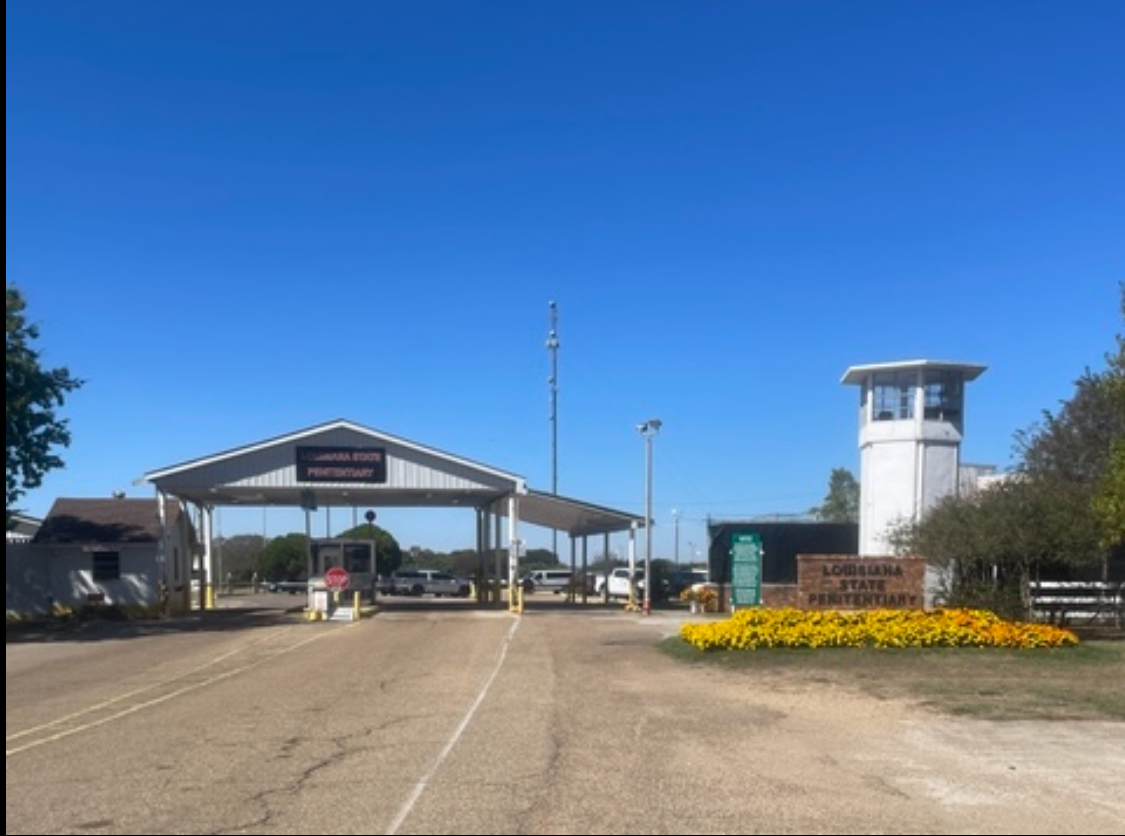
The Louisiana State Penitentiary Museum advertised a plethora of programs that "teach skills'' to make prison life more "meaningful." Angola Hospice Care stood out to me as one of the most ostensibly sinister–incarcerated people would be charged with taking care of those with life sentences near the end of their lives. The process would be repeated as the hospice caretakers age. Incarcerated people in the woodshop would make coffins for the elderly, and eventually for themselves. The largest graphic in the museum was in the farthest room from the entrance: a full-wall picture of the horse-driven hearse that would carry the dead out of the prison grounds for the last, and only, time. Where is the meaning in a life with no volition or autonomy, where muscle and blood are reduced to nothing but a vessel for labor?
These "skill" programs are no more than justifications for modern day plantation agriculture. Angola is commonly referred to as "The Farm," and all commodities produced on the prison's property are sold for the state's profit, with the incarcerated individuals receiving nothing–a modern day slave economy. The Angola Plantation never stopped being a plantation, even after it was leased to the state as a penitentiary. Because of the river, the land is arable and transportation from the prison is simple. The penitentiary puts inmates to work on municipal projects for low or no wages, which is justified by the rhetoric that these programs foster "meaningful skills." As George Jackson, author, theoretician and once incarcerated person wrote, the most apt definition of fascism is reform. We find meaning and culture through food sovereignty and control over diet and food. Neither of these can truthfully exist within a prison system, or in a nation that relies on slave labor or the destruction of the environment for the production of its food.
Civil rights activist Fannie Lou Hamer’s insight that “food is used as a weapon” made plain the connection between malnutrition and poverty. Weaponizing food is just another form of domination over a people, and justification of a harmful system. When organizations like the Dairy Farmers of America use the rhetoric that America is "feeding the world," it speaks to a reliance, regardless of whether or not American dairy farmers are actually feeding the world. Prisons rely heavily on industrial agriculture, but they also are functionally the same, and rely on each other.
Prisoners continue to resist domination over their bodies and sovereignty today, most notably through the 2011 and 2013 hunger strikes in California and national prison strikes in 2016 and 2018. But food-related problems continue to persist: reliance on the commissary for food and goods outside of the prison cafeteria makes for a $1.6 billion dollar industry capitalizes on incarcerated peoples federally designated hunger.
Arundhati Roy, in her essay "The Greater Common Good" wrote about this reliance: "To slow a beast, you break its limbs. To slow a nation, you break its people. You rob them of volition. You demonstrate your absolute command over their destiny. You make it clear that ultimately it falls to you to decide who lives, who dies, who prospers, who doesn't. To exhibit your capability you show off all that you can do, and how easily you can do it. How easily you could press a button and annihilate the earth. How you can start a war, or sue for peace. How you can snatch a river away from one and gift it to another."

I'd like to conclude with two stories from our travels. Both stories speak to the power of human kindness that is ubiquitous on the river. As we left Whitney Plantation, solemn in Dr.
Ibrahima Seck's reminder that the slave economy still exists today, we met two tow captains disembarking from their ships. "Where is your crew?" we asked them. They responded, "Our crew is a company of prisoners, men who have committed nonviolent crimes. They are given the option to work on these tow boats for cents on the dollar instead of being holed up in a cell all day." One captain said, "I was once one of them."
These men are not allowed to leave the ship. They work in 12 hour shifts, either day or night, and are constantly surveilled. We didn't want to eat dinner until they had left for their night shift, and they weren't allowed to talk to us, but we waved and shouted greetings from the beach, and they asked short questions back–their bosses for the night weren't there yet ("those captains are a lot meaner than us" the departing captain told us). After a minute, a few of the crew disappeared into the boat and reemerged with bug spray, bread, and sandwich meat. "We want to give you these!" they said, and tossed it down to us. We responded with cookies and gratitude and more conversation. They do not have much food, and what food they have is rationed, and yet they still insisted on giving us what precious food they had.

On the river near St. Francisville, just south of the Louisiana State Penitentiary, we met Bubby Foster with a cooler full of river monsters. He motored over to our boat in the midst of a crossing. It was late and we had just finished an exhausting argument over where our camp should be for the night. Our preordained landing had been unshaded and populated by fishermen and their families who whooped and hollered as we paddled past. We hadn't rested in days, and to add to the frustration, we were running out of food. The next landing was a big shallow sandbar. Not an ideal spot to bring the boats in.
So we did not see Bubby's arrival, filming us on his iPhone, as auspicious as it turned out to be. He ran parallel to us for a bit, out of earshot of our silent cussings, until John hollered if he had any fish. Sure enough, he said, but you gotta tell me who you are first.
Four huge catfish and a bag of shrimp bait later, we separated from Bubby, having invited him to dinner and thanked him profusely. He had caught them only to give them away, and we happened to be in the right place at the right time. There is no shortage of River Angels who are more than ready to share food, supplies, and stories with us. There is an equitable system of giving and community that exists among those who travel and live on the river. Some may call it utopian, some may see it as simply the reward of centuries of survival in tetchy lands. We were grateful either way.
Catfish have a prehistoric bone structure, and their backbone is thick as a human femur. It's "Y" shaped, with a wide, bony head and body. They are fatty fish, and lend themselves to smoking (enjoy with beer!). But oily fish, according to Calvin Fremling, are susceptible to storing "fat-soluble, persistent, organic chemicals like polychlorinated biphenyls (PCBs) and DDT that have been run up and concentrated through food chains"(278). This is another notable threat to food sovereignty in the Chemical Corridor. We saw more fishermen in that stretch than anywhere else, and they were mostly Brown and Black men. Surplus dangerous chemicals from petrochemical plants can end up in three places–the air, the water, or the earth, where they will invariably leak into the groundwater. Fish are a generational staple for subsistence farmers in southern Louisiana, and these pollutants enter the digestive system just as quickly as they enter the fluvial waterways.
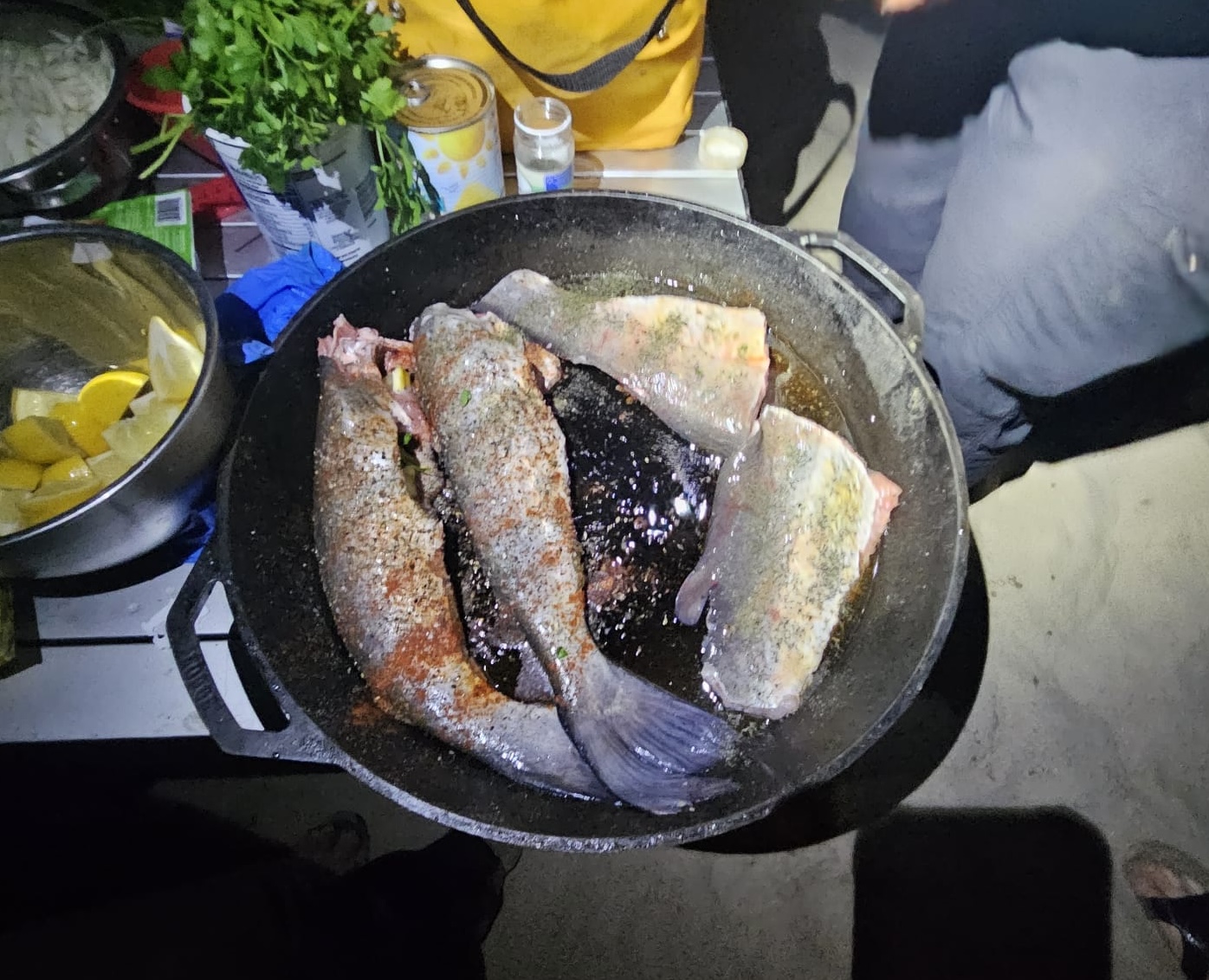
White, bloated dead fish bodies carpeted the shore at nearly every boat ramp we used in the south. They piled up between the enormous barge docking pilings under the coal and grain loading facilities. None of the workers seemed to know why they were dying in such large amounts, though some had their suspicions. Some figured that they starved, as their main source of food was spilled grain from these silos that weren't working because of the exceptionally low water level. Others suspected the die-offs were a result of the water level, but it might be the ratio of pollutants to water in these back channels had led to eutrophication, an excess of nutrients and lack of oxygen in the water. Whatever it was, it only affected the fish, which weren't a concern if they weren't eaten, right?
Catfish function as semi-indicator species. If their consumption leads to illness and death, the water is in a dangerous state of pollution. But at the same time–what is a dangerous state of pollution? Max Liboriron writes about the idea of assimilative capacity, and the colonialist idea that Americans are entitled to pollute just as long as it doesn't get "too bad." What "too bad" means is up to the perceived dominator of the landscape, whether it's a petrochemical plant or the Department of Environmental Protection. This dominion over the water and the animals within it is akin to the violence perpetrated in America's prison system and agricultural industries.
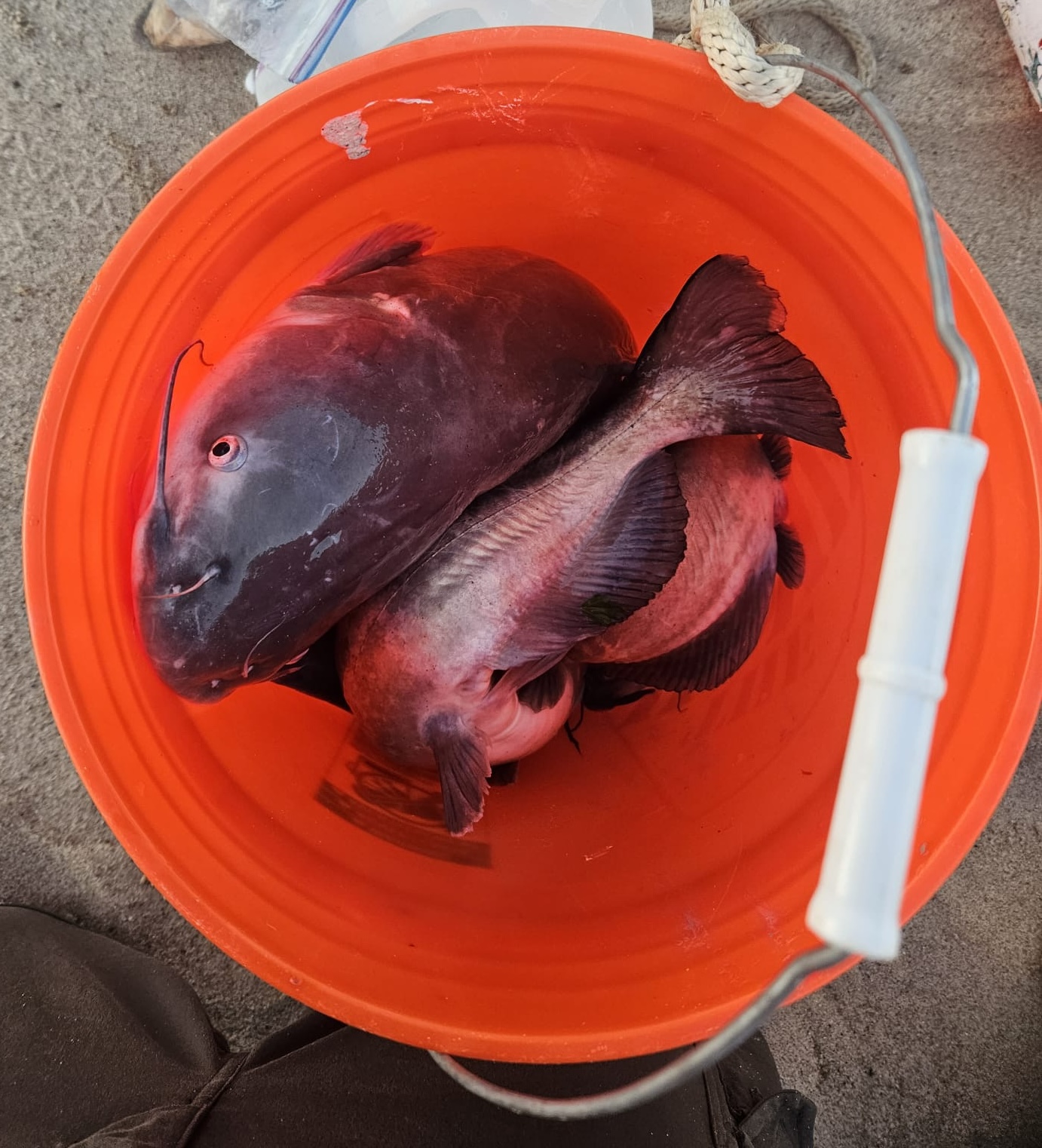
We trusted that Bubby had checked the fish consumption advisories, and we had not reached the Georgia Pacific plant that marks the infrastructural start to the heavily polluted chemical corridor. These fish were very fatty, and even blackened with spices tasted of the river. Their thick, rubbery flavor came from the flesh that fell off the bone under a rainbow slick skin, not unlike the water in these back channels.
St. Francisville Blackened Catfish (A Cursory Mississippi River Fish Manual)
Catfish courtesy of Bubby Foster, Recipe courtesy of Anna Dupont
How to take fish apart (Informed improvisation by Cider):
Take out the gills–cut the head off by cutting between the cartilage of the very tough throat.
Cut down the middle of the belly, lengthwise.
Take out the insides (unfortunately, big mama had babies)
Wash the fish with freshwater.
Note: The author acknowledges this is probably not a common way of cleaning a catfish–we had no damned internet, no cursed knives or tools, just meet us where we're at. Also–I don't know any fish anatomy lingo–that's for the professionals.
Fish Rub (partially inspired by Bubby's recommendation)
Dried dill
Paprika
Garlic powder
Salt and pepper
Fresh Lemon slices (Timea's recommendation)
Fresh parsley
Sear in a cast iron. We prepared it with brussel sprouts and onions. We rubbed tabasco chili powder from the Tabasco factory in New Iberia on one catfish back (thank you John!). It was mouth-searingly spicy, and knocked your socks off and straight into the dryer!
Corona, G. Food, punishment, and the Angola Three’s struggle for freedom. Southern Cultures. (2024, April 2). https://www.southerncultures.org/article/food-punishment-and-the-angola-threes-struggle-for-freedom-1971-2019/
